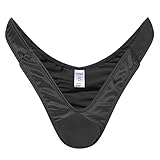
There are a few dangers associated with tucking; these risks include
- Infections
- Hemorrhoids
- and anal fissures.
Tucking can also be extremely uncomfortable, especially if done incorrectly.
What are Hemorrhoids?
Hemorrhoids are swollen veins in the anal canal. This common problem can be painful, but it’s usually not serious. Hemorrhoids may be internal or external. Internal hemorrhoids lie inside the rectum and often can’t be seen or felt, but they can cause bleeding during a bowel movement.

External hemorrhoids lie just under the skin around the anus. They may get swollen and bulge out during a bowel movement. External hemorrhoids are often very sore and itchy.
If you have any of these symptoms, it’s probably nothing to worry about and will go away on its own within a few days. But if you’re worried or the symptoms last more than a week, see your doctor.
What are anal fissures?
Anal fissures are tiny tears or cracks in the anus or anal canal lining. The anal canal is a short tube at the end of your rectum through which stool leaves your body.

Fissures are common but often confused with other problems, such as hemorrhoids. Anal fissures can cause bleeding and intense pain during bowel movements. You might even see blood on toilet paper after having a normal bowel movement.
Most anal fissures heal with home treatment after a few days or weeks. These treatments include soaking in warm water (sitz baths), applying barrier creams or ointments, and taking sitz baths. If home treatment doesn’t work, your doctor might recommend other treatments.
Related FAQ:
Can tucking cause testicular torsion
218]); ?>









